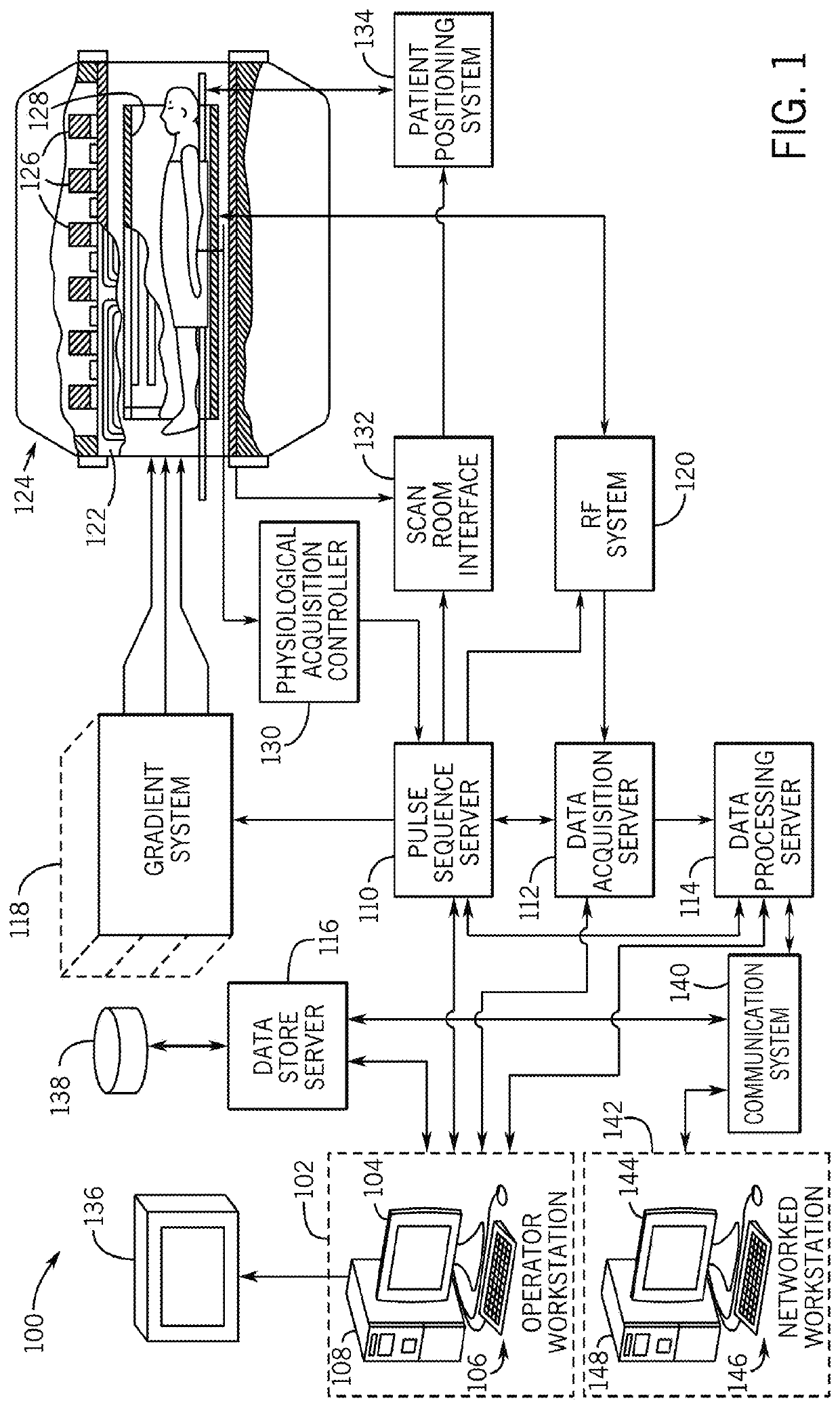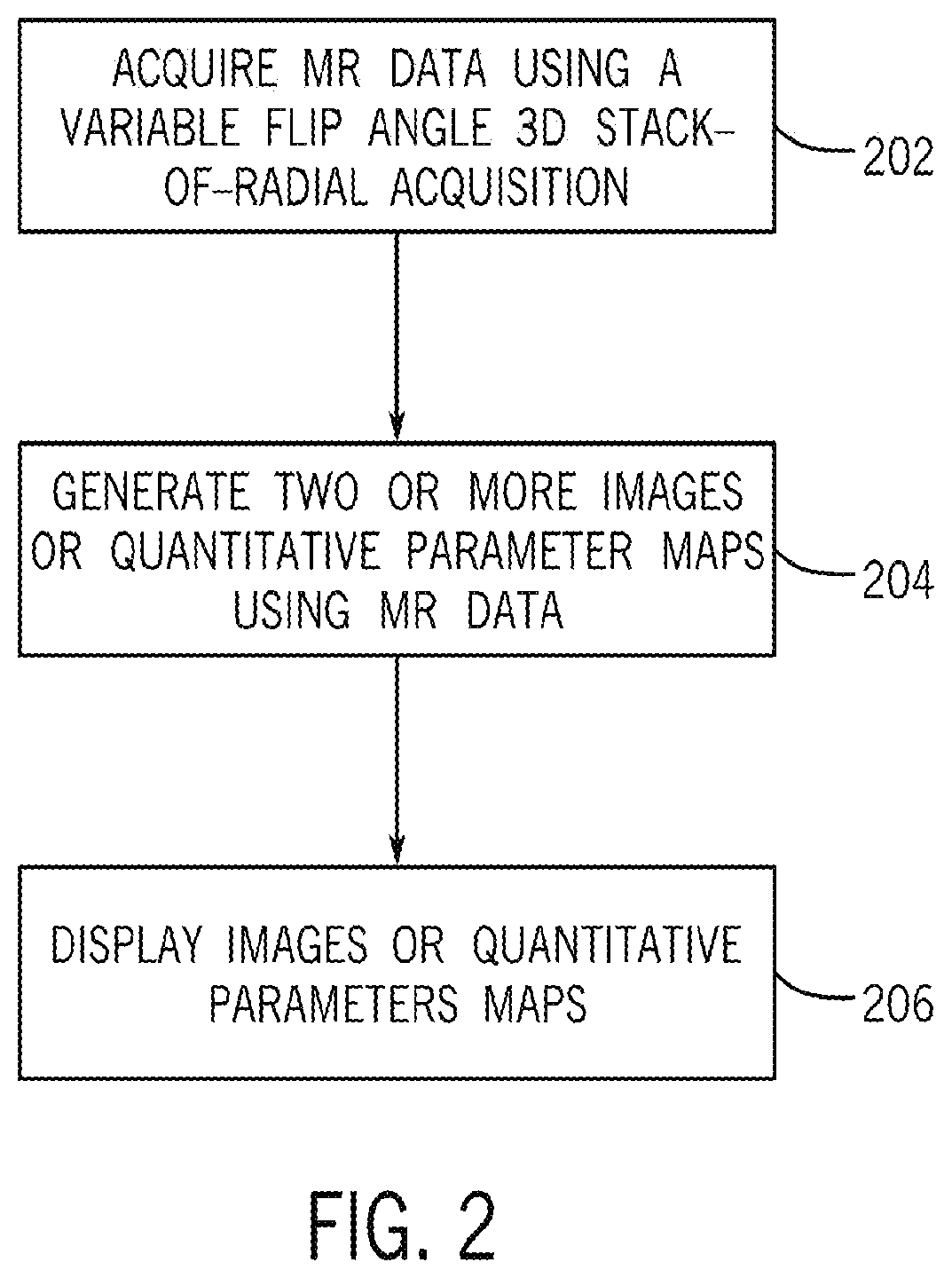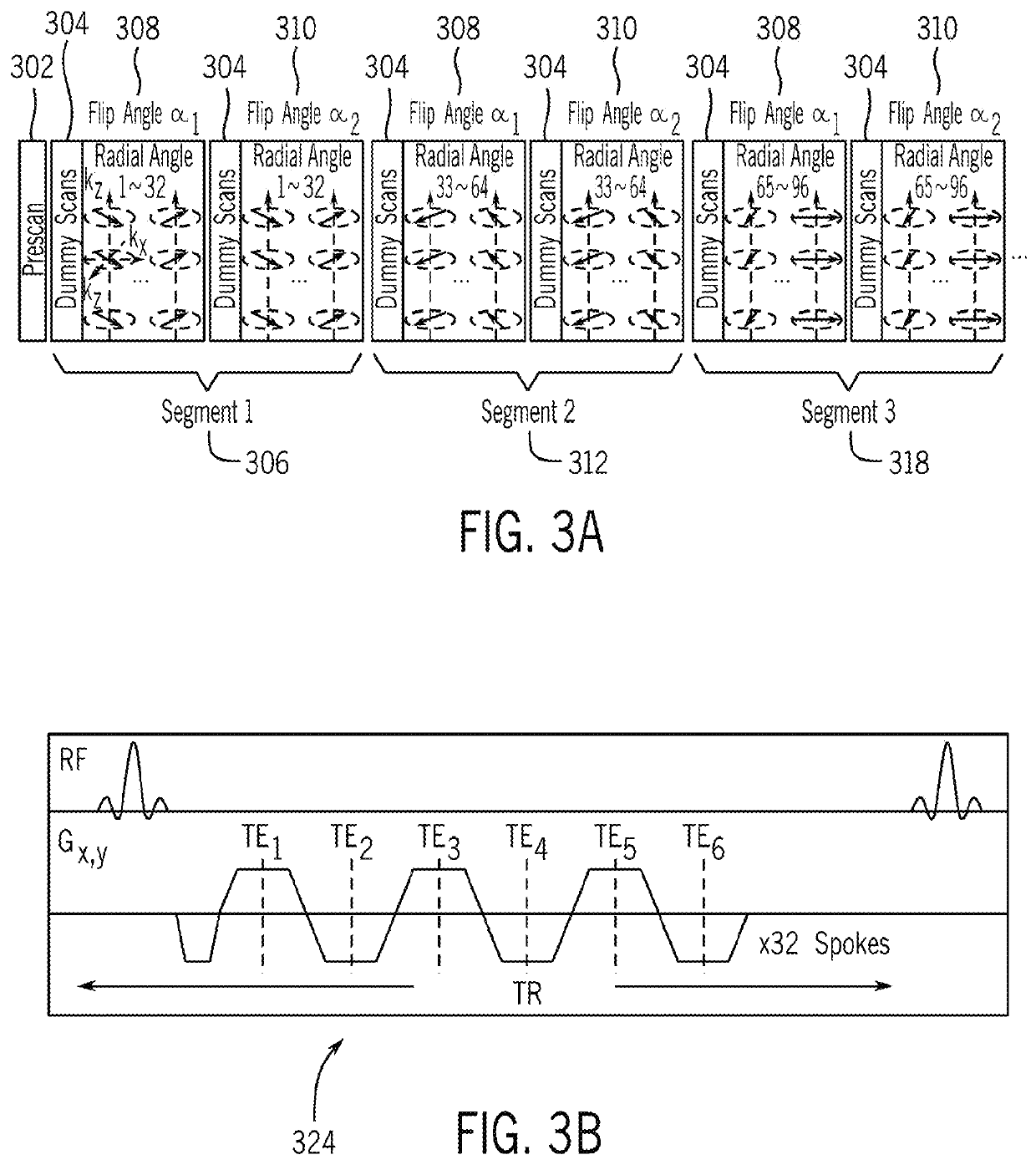System and Method for Free-Breathing Quantitative Multiparametric MRI
a multiparametric and free-breathing technology, applied in the field of systems and methods for free-breathing quantitative multiparametric mri, can solve the problems of temperature error, inability to measure temperature change in adipose tissues, and the proton resonance frequency of fat spin only displays a minute temperature dependen
- Summary
- Abstract
- Description
- Claims
- Application Information
AI Technical Summary
Benefits of technology
Problems solved by technology
Method used
Image
Examples
example 1
[0080]In various example studies discussed below, the accuracy of the disclosed VFA 3D stack-of-radial technique for T1 quantification was evaluated in a reference T1 / T2 phantom. In vivo non-heating experiments were conducted in healthy subjects to evaluate the stability of PRF and T1 in the brain, prostate, and breast. In addition, the proposed VFA 3D stack-of-radial technique was used to monitor high intensity focused ultrasound (HIFU) ablation in ex vivo porcine fat / muscle tissues and compared to temperature probe readings.
[0081]In this example, the VFA 3D stack-of-radial technique achieved 3D coverage with 1.1×1.1 to 1.3×1.3 mm2 in-plane resolution and 2-5 s temporal resolution. During 20-30 minutes of non-heating in vivo scans, the temporal coefficient of variation for T1 was 1 were consistent with temperature probe readings, with an absolute mean difference within 2° C.
[0082]In this example study, to evaluate the accuracy of T1 measurements the proposed VFA 3D stack-of-radial ...
example 2
[0095]In another example study, non-heating free-breathing scans were carried out in human subjects to evaluate the reliability of both T1 and PRF measurements in a moving organ, in particular, the liver. In this study, N=10 healthy subjects (6 males, 4 females) with age of 33±11 years and body mass index of 28.4±8.8 kg / m2 underwent non-heating free-breathing abdominal scans at 3T with body and spine arrays for 5˜10 minutes. The scanning parameters for the example in vivo dynamic PRF / T1 thermometry were: Field of View (FOV) 320×320×48 mm3, matrix size 192×192×16, resolution 1.67×1.67×3 mm3, flip angles 3° and 15°, targeted T1 range 8001200 ms, number of echoes / TE1 / ΔTE 4 / 1.21 / 1.21 ms, TR 6.32 ms, number of angles / segment 32, number of segments 48, total running time 6:36 (minutes:seconds), number of radial spokes in center / total spokes 8 / 144, temporal resolution / temporal footprint of PRF maps 0.91 / 16.4 s, temporal resolution / temporal footprint of T1 maps 0.91 / 20.5 s.
[0096]To characte...
example 3
[0101]In another example study, the VFA 3D stack-of-radial multi-echo gradient echo MRI technique (“radial VFA”) was used for simultaneous free-breathing 3D liver T1, PDFF, and R2* mapping. In this example, healthy adults (n=18) and children (n=2) were imaged at 3 Tesla using radial VFA in 3-min. B1+ maps were acquired during end-expiration breath-holds for VFA T1 calculation. PDFF / R2* were calculated from multi-echo data acquired with the smaller flip angle. Self-navigated soft-gating was performed to reconstruct radial VFA images at end-expiration. Breath-holding VFA 3D Cartesian multi-echo gradient echo and breath-holding 2D Cartesian Modified Look-Locker Inversion Recovery (MOLLI) sequences were acquired as references. Bland-Altman analysis was conducted to evaluate agreement between the sequences. Intraclass correlation coefficients (ICC) were calculated to assess the repeatability of radial VFA.
[0102]To assess the T1 mapping accuracy, a system T1 / T2 phantom was placed in a 3T ...
PUM
 Login to View More
Login to View More Abstract
Description
Claims
Application Information
 Login to View More
Login to View More - R&D
- Intellectual Property
- Life Sciences
- Materials
- Tech Scout
- Unparalleled Data Quality
- Higher Quality Content
- 60% Fewer Hallucinations
Browse by: Latest US Patents, China's latest patents, Technical Efficacy Thesaurus, Application Domain, Technology Topic, Popular Technical Reports.
© 2025 PatSnap. All rights reserved.Legal|Privacy policy|Modern Slavery Act Transparency Statement|Sitemap|About US| Contact US: help@patsnap.com



